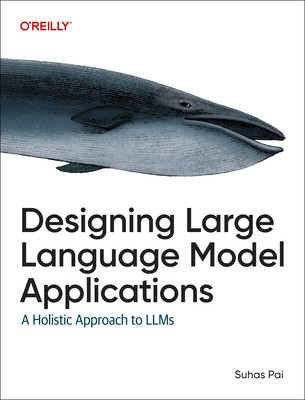
- We will send in 10–14 business days.
- Author: Suhas Pai
- Publisher: O'Reilly Media
- ISBN-10: 1098150503
- ISBN-13: 9781098150501
- Format: 17.8 x 23.3 x 1.9 cm, minkšti viršeliai
- Language: English
- SAVE -10% with code: EXTRA
Reviews
Description
Transformer-based language models are powerful tools for solving a variety of language tasks and represent a phase shift in the field of natural language processing. But the transition from demos and prototypes to full-fledged applications has been slow. With this book, you'll learn the tools, techniques, and playbooks for building useful products that incorporate the power of language models.
Experienced ML researcher Suhas Pai provides practical advice on dealing with commonly observed failure modes and counteracting the current limitations of state-of-the-art models. You'll take a comprehensive deep dive into the Transformer architecture and its variants. And you'll get up-to-date with the taxonomy of language models, which can offer insight into which models are better at which tasks.
You'll learn:
- Clever ways to deal with failure modes of current state-of-the-art language models, and methods to exploit their strengths for building useful products
- How to develop an intuition about the Transformer architecture and the impact of each architectural decision
- Ways to adapt pretrained language models to your own domain and use cases
- How to select a language model for your domain and task from among the choices available, and how to deal with the build-versus-buy conundrum
- Effective fine-tuning and parameter efficient fine-tuning, and few-shot and zero-shot learning techniques
- How to interface language models with external tools and integrate them into an existing software ecosystem
EXTRA 10 % discount with code: EXTRA
The promotion ends in 23d.23:16:42
The discount code is valid when purchasing from 10 €. Discounts do not stack.
- Author: Suhas Pai
- Publisher: O'Reilly Media
- ISBN-10: 1098150503
- ISBN-13: 9781098150501
- Format: 17.8 x 23.3 x 1.9 cm, minkšti viršeliai
- Language: English English
Transformer-based language models are powerful tools for solving a variety of language tasks and represent a phase shift in the field of natural language processing. But the transition from demos and prototypes to full-fledged applications has been slow. With this book, you'll learn the tools, techniques, and playbooks for building useful products that incorporate the power of language models.
Experienced ML researcher Suhas Pai provides practical advice on dealing with commonly observed failure modes and counteracting the current limitations of state-of-the-art models. You'll take a comprehensive deep dive into the Transformer architecture and its variants. And you'll get up-to-date with the taxonomy of language models, which can offer insight into which models are better at which tasks.
You'll learn:
- Clever ways to deal with failure modes of current state-of-the-art language models, and methods to exploit their strengths for building useful products
- How to develop an intuition about the Transformer architecture and the impact of each architectural decision
- Ways to adapt pretrained language models to your own domain and use cases
- How to select a language model for your domain and task from among the choices available, and how to deal with the build-versus-buy conundrum
- Effective fine-tuning and parameter efficient fine-tuning, and few-shot and zero-shot learning techniques
- How to interface language models with external tools and integrate them into an existing software ecosystem


Reviews